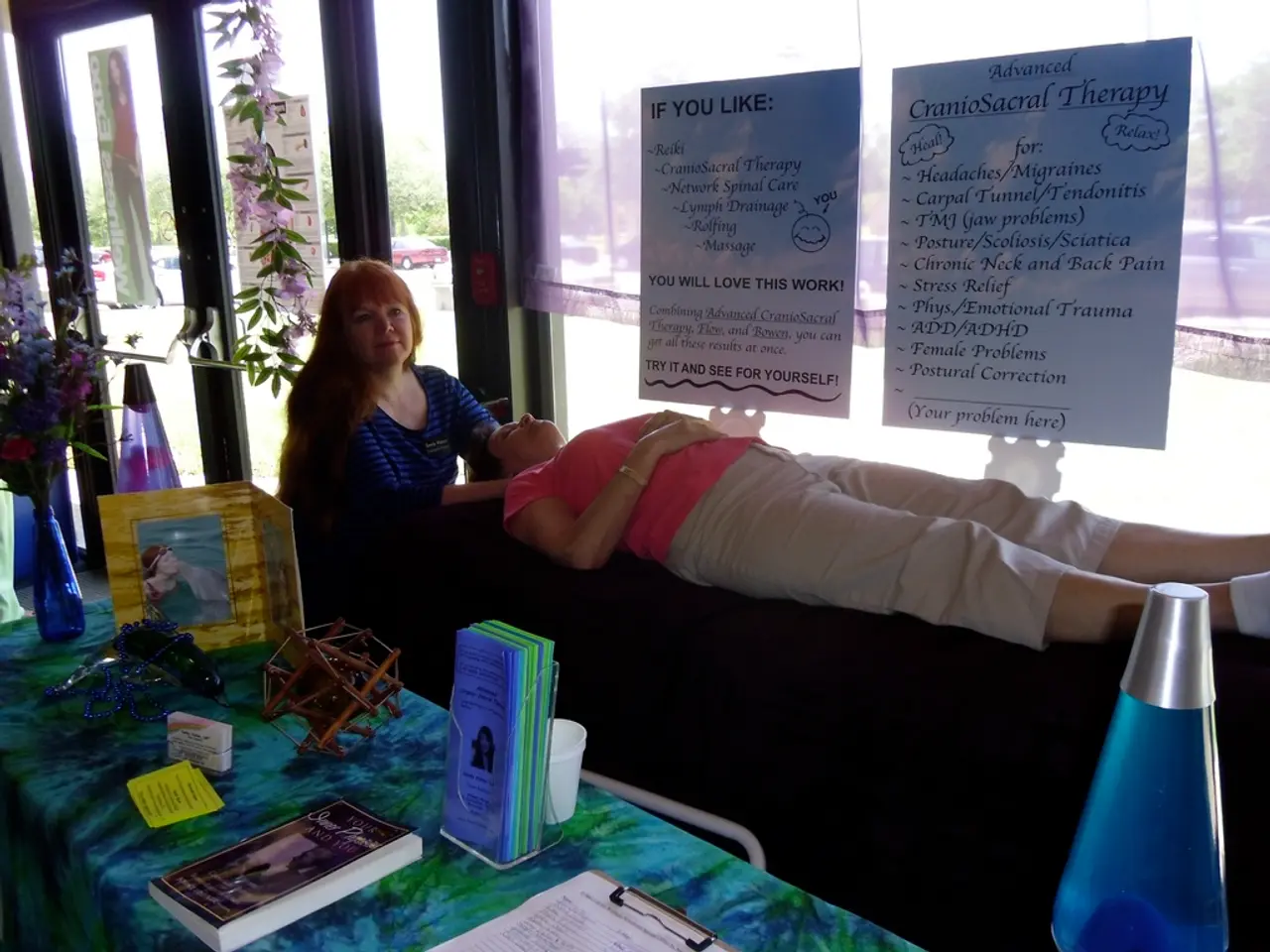Intense Obsessive-Compulsive Disorder: Characteristics, remedies, and additional information
Obsessive-Compulsive Disorder (OCD) is a mental health condition that affects millions worldwide, characterized by recurring thoughts and behaviors that are difficult to manage. While medication and behavioral therapy are common treatments, severe cases that do not respond well to these interventions may benefit from alternative treatments.
In such cases, healthcare professionals may recommend repetitive transcranial magnetic stimulation (rTMS), deep brain stimulation (DBS), and intensive residential treatment programs. These interventions are designed to manage symptoms in treatment-resistant OCD cases.
rTMS is a non-invasive procedure using magnetic pulses to stimulate brain areas involved in mood and anxiety regulation. It has shown positive effects in treatment-resistant OCD when medication and psychotherapy have failed. On the other hand, DBS is a more invasive procedure involving the surgical implant of electrodes in specific brain regions to regulate abnormal brain activity. DBS is reserved for severe, treatment-resistant OCD due to its nature.
In addition to these procedures, alternative therapies include Acceptance and Commitment Therapy (ACT), Dialectical Behavior Therapy (DBT) skills integration, and mindfulness-based therapies. ACT focuses on accepting intrusive thoughts without compulsive response and improving psychological flexibility, useful especially if Exposure and Response Prevention (ERP) is not tolerated or effective. DBT skills can improve outcomes for severe or complex OCD, especially when emotion regulation deficits occur alongside symptoms. Mindfulness-based therapies help patients observe and accept obsessions without reacting compulsively, promoting reduced symptom severity.
Intensive residential or day treatment programs provide comprehensive, structured therapy and medication management tailored to severe OCD cases. These programs offer an immersive environment for patients who have not improved with outpatient treatment.
Lifestyle and stress management interventions, such as exercise, yoga, meditation, diet adjustments, and sleep hygiene, also contribute to symptom management and overall wellbeing. While not a replacement for specialized treatments, these interventions can help decrease anxiety and prevent OCD symptoms.
In emergency situations, call 911 or your local emergency services number. Various support groups, such as those offered by the International OCD Foundation and the National Alliance on Mental Illness, can help a person feel more understood and connected. The Crisis Text Line and the 988 Lifeline are also available for crisis support 24/7.
Common symptoms of obsessions include a fear of contamination or germs, aggressive thoughts toward themselves or others, unwanted thoughts regarding harm, religion, sex, and a need to have things in a perfect order or symmetrical position. Common symptoms of compulsions include excessive handwashing or cleaning, repeatedly checking things, arranging things in a precise way, compulsive counting, and having a tic disorder that manifests in movements such as eye blinking, shoulder shrugging, head jerking, or vocal tics such as sniffing, throat-clearing, or grunting.
In clinical practice, a thorough assessment is essential to tailor these alternatives based on severity, comorbidities, and treatment history. Often, a combination of these approaches achieves the best results, such as integrating ACT or DBT skills with ERP or augmenting CBT with rTMS or DBS for highly resistant cases.
In the treatment of severe, treatment-resistant OCD cases, healthcare professionals might suggest repetitive transcranial magnetic stimulation (rTMS) or deep brain stimulation (DBS), along with intensive residential treatment programs. These interventions, designed to alleviate symptoms, are employed when medication and behavioral therapy have not been effective. Mindfulness-based therapies and Acceptance and Commitment Therapy (ACT) can also be beneficial, helping patients manage symptoms and accept intrusive thoughts without compulsive responses.




